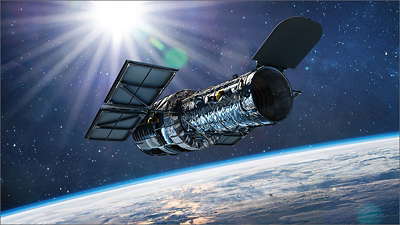Cloud native EDA tools & pre-optimized hardware platforms
Natural curiosity has been the driving impetus of many human advancements. It has driven us to find out more about ourselves, discover the vastness and richness of biodiversity here on Earth, and understand our physical surroundings.
This desire for exploration inevitably inspired us to make better sense of the universe, a big part of which was being able to see it. The design of optical systems and solutions has been vital for scientists worldwide to continue deciphering the many space mysteries and, ultimately, explore what lies beyond Earth.
To commemorate this year’s National Space Day, we’ve rounded up some interesting facts about optical systems and space exploration. Read on to learn more about the optical design industry’s growth over the years, most common use cases in space, key design challenges, the many innovations it has enabled, where the industry is headed, as well as 草榴社区’ mark on the field.

Optical Design, Space Exploration, and Semiconductors Over the Years
The semiconductor industry and space exploration community essentially grew up together. As interest in space exploration evolved, so has the semiconductor industry’s (whose input is critical in powering and enabling many of the advancements needed to study space and go deeper into it). One of the earliest examples is the development of transistors — smaller, more efficient, and cost-effective semiconductor devices that replaced vacuum tubes and allowed the creation of lightweight computers that could be accommodated onboard a spacecraft and provide the computation power necessary for guidance and control.
An emblematic example is the 1963 Apollo 11 program and consequent moon landing — the very first time engineers employed ICs powerful enough to guide humans to the moon and back. The earliest space missions such as Project Mercury, Voyager, and Pioneer used imaging systems and increased semiconductor collaboration to further our understanding of space.

Every major space exploration leap requires semiconductor involvement. The two industries are closely intertwined and have naturally evolved to meet changing requirements and demands over the years. Many advancements in optical system design and space exploration can be attributed to advances in semiconductors. In the early days of optical design and space exploration, optical designers would trace just a few rays by hand and glean information from those few ray traces to guide their optical designs. In contrast, modern graphically driven optical design tools such as 草榴社区’ CODE V, LightTools, and LucidShape solutions are enabled by advanced semiconductor-based microprocessors that can quickly trace millions of geometric rays through candidate optical designs. Those ray traces are then used in optimization algorithms, guided by an optical design engineer, to design optical systems that could never have been developed without advanced semiconductors and software tools.
Space Applications for Optical Systems & Current Design Challenges
A large variety of optical designs are used in space exploration applications. One of the more common examples of optical systems aboard spacecraft vehicles is what we call a “star camera.” Star cameras are optical systems that image star fields on a focal plane array. The star images are then compared with standard star catalogs to determine the direction the star camera faces and, subsequently, the orientation of a spacecraft. Star cameras are incorporated in almost every modern spacecraft and are essential for establishing the location and heading of a spacecraft.
Other examples of optical systems used in space exploration include science imaging cameras used to provide images of scientifically significant scenes, spectrometers used to study atmospheric emissions and geologic composition, and even LIDAR systems used to establish distances or remotely evaluate material composition.
The exact optical system used depends on what the core objective is. The zoom camera aboard the Mars Perseverance Rover, Mastcam-Z, for example, examines Mars’ geomorphology to identify where water existed in the past on Mars and understand the role of water in the formation of its geological features. Those features are explored for the potential suitability of hosting past life forms. The search for life beyond our planet is currently one of the main objectives in space exploration. Ground-based telescopes in search and space missions are being developed for the purpose of finding planets that could possibly host life forms.
Designing optical systems for space applications, however, comes with many challenges. Environmental conditions are often extreme. Some environments are very hot, others are extremely cold, and often the temperature can swing between both extremes. Some environments can be corrosive, and optical systems meant for use in space are often subjected to high radiation doses. Space optical systems are increasingly sophisticated, yet must be extremely reliable. Along with the harsh environments, increasing sophistication requirements, and reliability challenges, engineers also need to factor in size. Volume, mass, and power are precious commodities on a spacecraft and often impose difficult constraints on optical systems.
Interdisciplinary Efforts and 草榴社区’ Space Footprint
With so many challenging design and implementation factors, space optical systems demand a team of domain experts that collaborate to design and build them. It is only within the team construct that optical systems on space missions are possible. Think of it as a sports team: every player brings their unique skill set to the game, trusts their teammates, and works together to score a goal, land a touchdown, or hit a grand slam.
Similar to being on the field, working on mission-critical space projects also requires a strong team structure that focuses on delivering a common goal top down — from the political and leadership executives to the technical experts and programming engineers.
At 草榴社区, we have a rich history of working in space exploration and know the importance of being part of the right team. Even before being acquired by 草榴社区, Optical Research Associates (ORA) had already provided designs for early missions in the space program. Later, optical engineers used ORA/草榴社区 software to design and validate the corrective optics on the Hubble Space Telescope’s first servicing mission, enabling it to take the images it currently does today.
More recently, 草榴社区 optical engineers have worked with various partners to design both deep space and low-earth orbit (LEO) systems. In one notable example, 草榴社区 optical engineers partnered with Malin Space Science Systems, Motiv Space Systems, Arizona State University, and Jet Propulsion Laboratory (JPL) to design the first zoom lens system in interplanetary or deep space exploration, Mastcam-Z, using 草榴社区 CODE V optical design software. As another example of a system just now coming on line, we have had the pleasure of working closely with NASA on the James Webb Space Telescope (JWST) as part of the JWST Product Integrity Team, where CODE V was used to design several deep imaging instruments to study the first galaxies formed after the Big Bang.
Cross-organizational efforts such as these are essential in achieving success during mission-critical space projects and expanding our knowledge of the universe.
What’s Next for the Space Industry?
As we continue expanding our horizons, both literally and figuratively, the interdisciplinary nature of space exploration will only continue to grow. Space projects will increasingly become more complex and sophisticated. This will drive the need for greater collaboration between organizations and providers to respond to innovation demands. It will also drive more capable software tools and integrated semiconductor devices to run those tools.
Moving forward, we can expect to see exciting developments in space exploration projects, including the design of vehicles incorporating optical systems aimed to explore the moon, Mars, and other celestial bodies in greater detail. We are also in the process of constructing large ground telescopes that can bring a new level of detailed space imaging from Earth.
These developments all involve advanced optical systems. Many of them will require enhanced ground control and monitoring and some of them will require advanced communications satellites. These are just a few of the areas that will continue to proliferate and evolve in the coming years. With scientists estimating that we have only explored a small fraction of our observable universe, there is still a vast opportunity to see things we haven’t discovered yet — a pursuit that will undoubtedly involve the design of innovative optical systems.
for news regarding 草榴社区’ involvement in upcoming space projects!


















